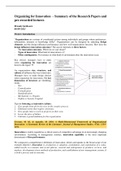Voor 1917: Tsaar Nicolaas II aan de macht.
1917: de Russische revolutie, waardoor ze zich ook uit de Eerste Wereldoorlog
terug trokken.
Na 1917: burgeroorlog, waarna in 1922 Lenin aan de macht komt
1918: einde Eerste Wereldoorlog en Roaring Twenties start.
1924: Lenin overlijdt na kort aan de macht te zijn geweest.
1924-1928: machtsstrijd over de macht, waarvan Stalin de overwinnaar wordt.
1928: Stalin aan de macht.
1929: economische crisis
1933: F. D. Roosevelt aan de macht.
1934: Grote zuivering. Politieke tegenstanders werden afgevoerd naar de
Goelag. (20 miljoen doden)
februari 1945: Conferentie van Jalta. Toppunt van geallieerde samenwerking.
juli 1945: conferentie van Potsdam.
1945: 2 atoombommen op Japan.
1945: Truman aan de macht.
1945-1954: Frans-Vietnamese Oorlog (guerrillaoorlog).
1947: Trumandoctrine
1947: Na de Trumandoctrine komt ook het Marshallplan.
1948: Blokkade van Berlijn, doordat de eenwording van de West-Duitse staat
als bedreiging wordt gezien. Dit wordt opgelost door het bevoorraden via de
Berlijnse luchtbrug.
1949: China wordt communistisch.
1949: de Navo wordt opgericht.
1950-1953: de Korea oorlog.
juni 1950: Noord-Korea valt Zuid-Korea binnen.
1953: Stalin overlijdt, waarmee de leider van de totalitaire dictatuur weg valt.
1954: Chroesjtsjov aan de macht in de Sovjet.
1954: Slag bij Dien Bien Phu, Frankrijk verloor hier de oorlog in de Frans-
Vietnamese Oorlog.
1954: Conferentie van Geneve en de akkoorden van Geneve als gevolg.
1955: Warschaupact
1956: Hongaarse opstand, opstand tegen stalinistische regering.
1956: bestroming van Felix Meritis (hoofdkantoor CPN) in Amsterdam na niet
veroordelen Sovjet gedrag in Hongarije.
1960: Vietcong, de Zuid-Vietnamese Volksbevrijdingsfront











